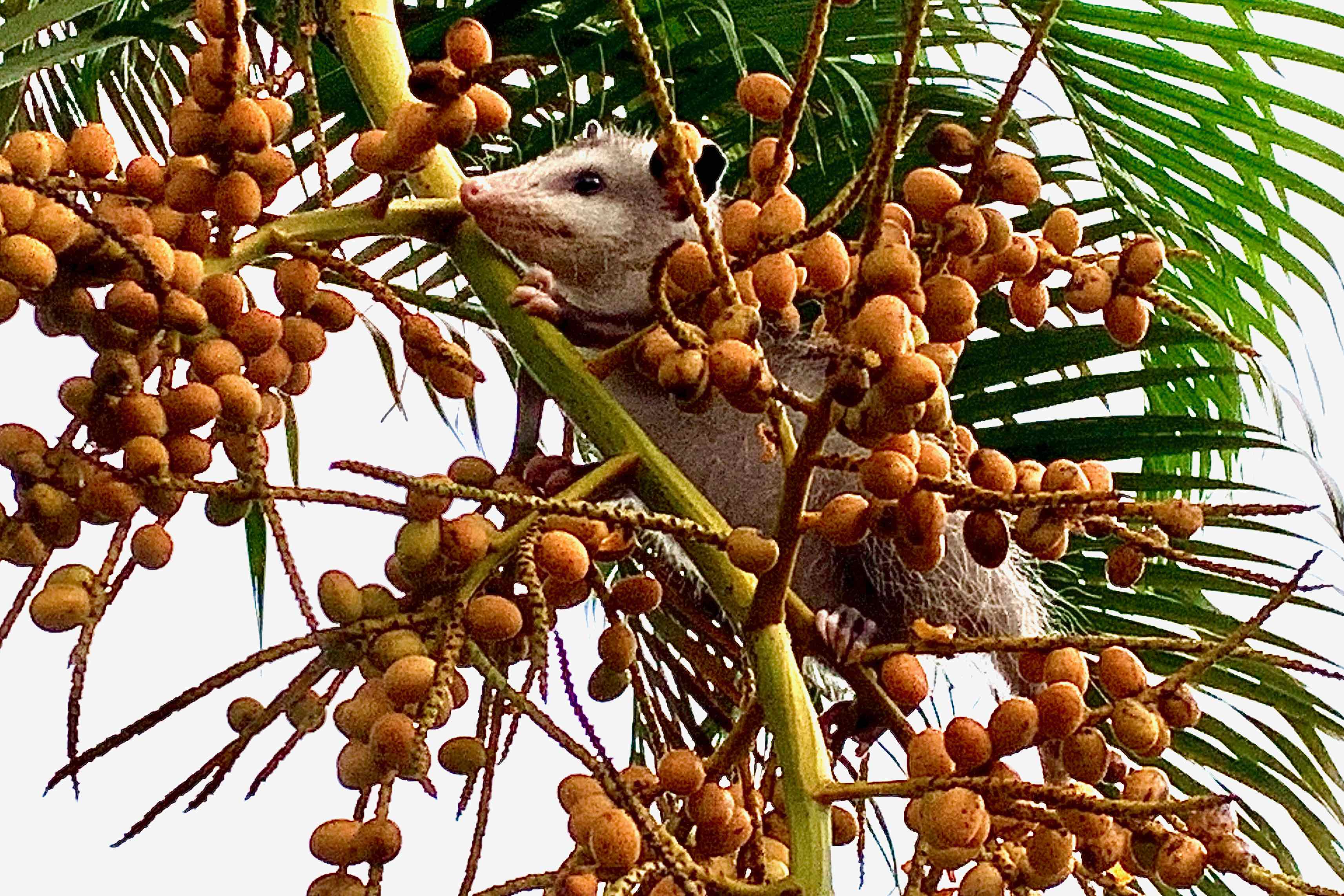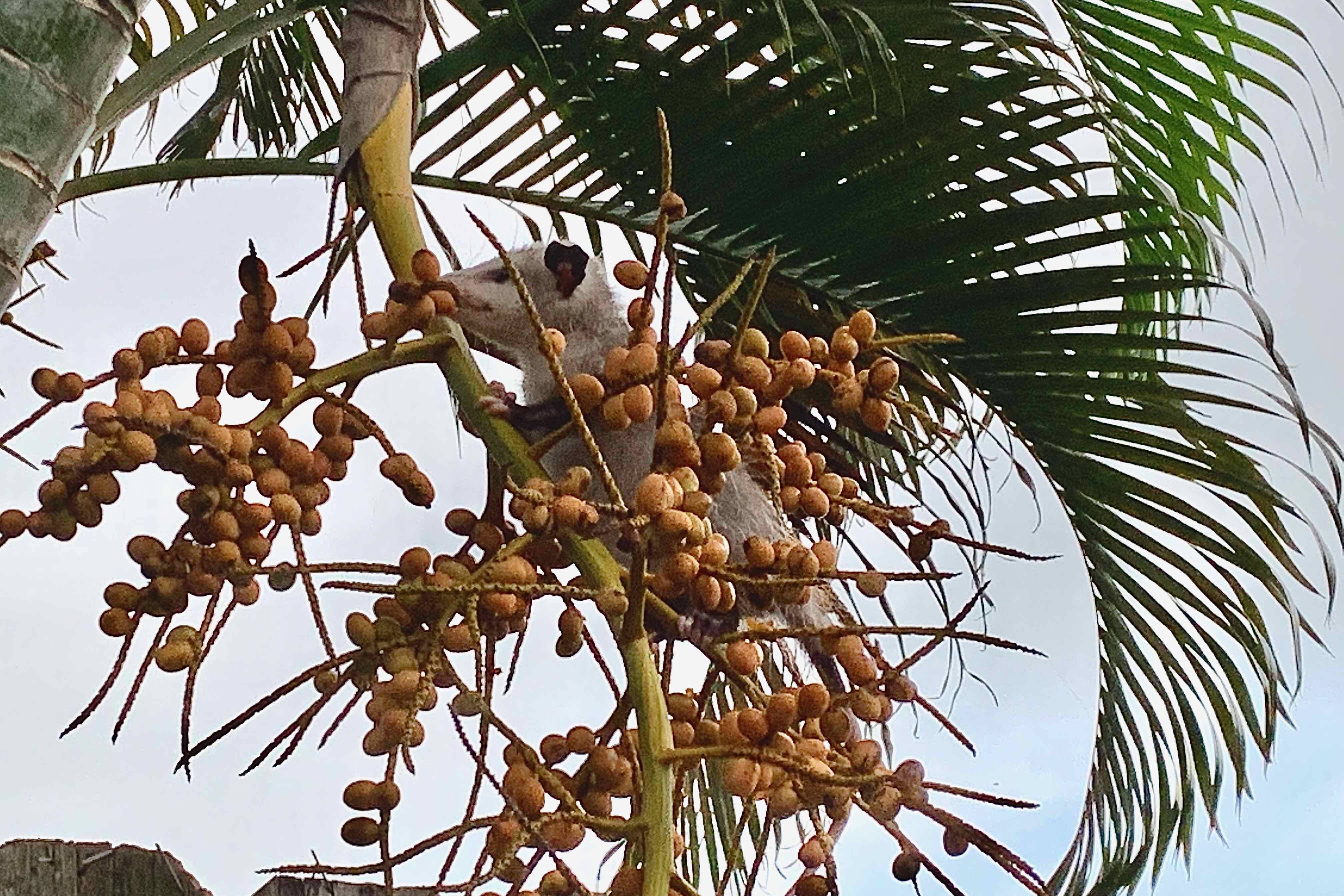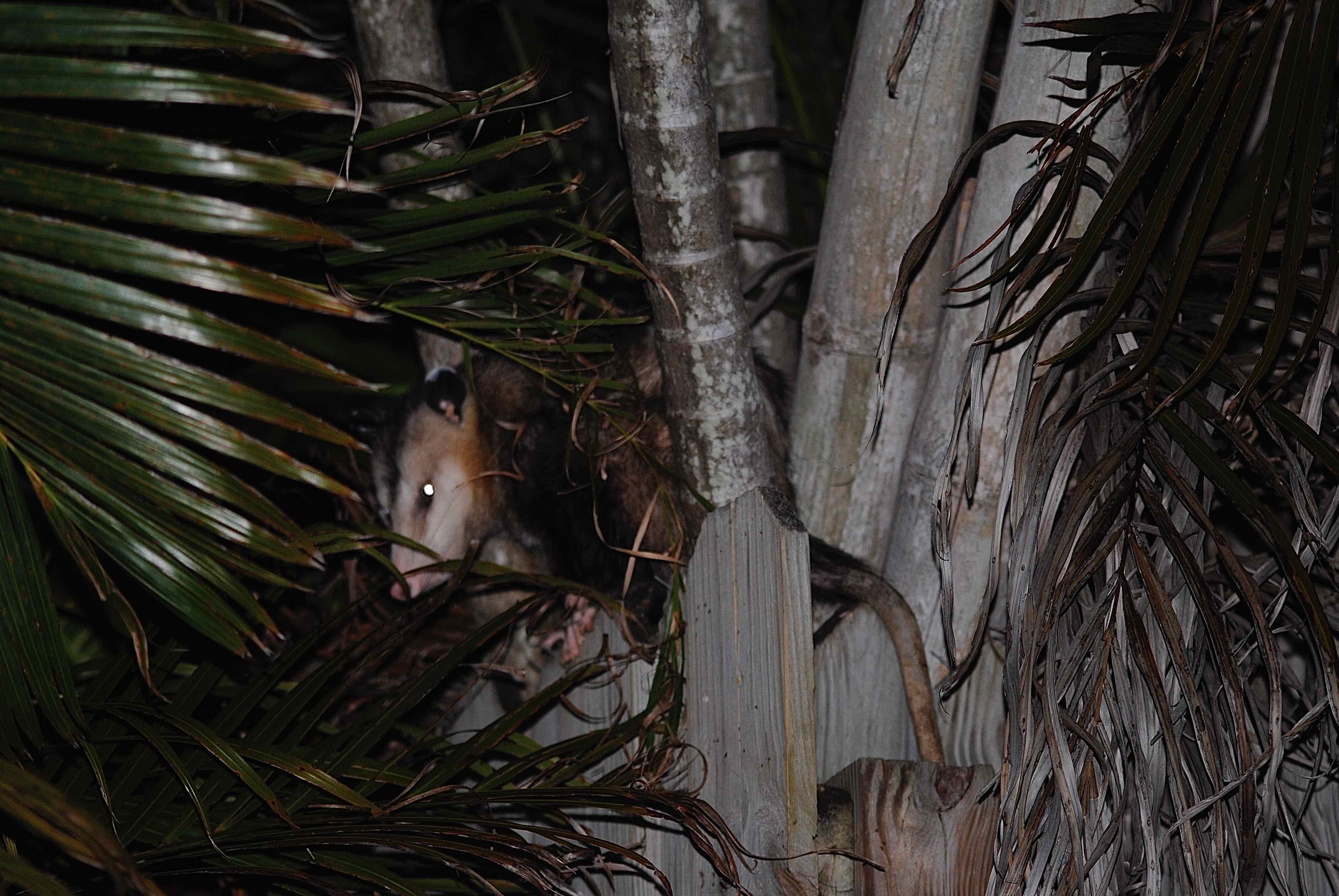
Virginia possom, photographed in northwestern Delray Beach, Palm Beach County, in September 2019.
The Virginia opossum, Didelphis virginiana, is a raccoon sans the cute factor. It probably inspires more fear than really should and in more ways than one, but it is an uncommon common animal and should be appreciated much more than it is.
According to the authors of The Opossum: Its Amazing Story, it is a misunderstood animal. And it's at least pheripherally involved with two major figures of American history.
First, the nuts and bolts of the opossum, aka 'possum. It is a marsupial, the same branch of mammals as kangaroos and koalas. It is the only marsupial native to North America. It is about the size of a cat, weighing between four and 13 pounds, with a body length of 15 to 20 inches and a prehensile tail that's 9 to 20 inches long. The tail that can be used in conjunction with opposable "thumbs" on its rear feet to grasp thing, as well as provide balance while walking and aid in climbing trees. It has a cone-shaped head, small ears and the tail is mostly naked.
It is found throughout Florida and the eastern United States, south into Mexico and Central America, and along the Pacific Coast. It can be found in forests; it can be found in the 'burbs, where we spotted this guy.
Like raccoons, they are generalists when it comes to food; they will eat almost anything — bird eggs, moles, worms, insects, snakes, grass, carrion, and like raccoons, garbage (batten down your garbage cans!).
They are nocturnal and shy — you're much more likely to find one as road kill than encounter one alive. They'll make their home in a tree stump, a culvert or your attic — anywhere they can find some shelter.
Like all mammals, opossums bear their young alive, but after only 13 days of gestation; like all marsupials, those youngin's are tiny, about a half-inch long, and immediately make for a pouch on their mother's underside.
There are 13 nipples inside the pouch. If there are 14 or more babies, well, the extras are out of luck. The first 13 will latch onto a nipple and stay there for the next two months, after which they emerge into the world, but not far. They'll hang with mom, literally on her, for another month before going out into the cold cruel world. A mother can have as many as three litters a year between winter and mid-summer, although two is more the norm. Didelphis, by the way, means two wombs.
Opossums are prey for bobcats, coyotes and dogs. Humans have hunted them for their fur and as food, though they are said to be too greasy for most tastes. They don't live long lives: a third birthday earns an opossum geezer status.
But they have extraordinary immune systems, nonetheless. Wild dogs are eight times as likely to catch rabies as opossums. They're also immune to the venom of copperheads, rattlesnakes and cottonmouths. And remember, snake is on their menu.
The first European to lay eyes on an opossum was Vicente Yanez Pinton, captain of the Nina, as in Nina, Pinta and Santa Maria of Columbus fame. He took one back to Spain to show Isabel and Ferdinand. The royals were amazed to find young opossums in the pouch. The word, opossum, is an Anglicized version of an Algonguian word, meaning "white animal." Captain John Smith — the guy who fell in love with Pocahontas — is credited for originating the name.
Opossums, when threatened, will hiss and bare their teeth as a display to scare off predators. That's given the animal a wrongly earned rep as aggressive, say The Opossum authors, William J. and Winifred A. Krause. It's all bluff and bluster. They're gentle creatures, more likely to pretend they are dead than attack. Which, of course, is the origin of the phrase, "playing possum." Opossums will lie on their side, motionless, mouth and eyes open, hoping their attacker is a species that doesn't eat carrion.
Fun fact No. 1: Opossums have 50 teeth, more than any other North American mammal.
Fun fact No. 2. A male opossum is called a Jack, a female is a Jill, and the young are called Joeys. Makes you wonder if the Jack and Jill that went up the hill were in fact four-legged critters.
Fun fact No. 3: Fossil evidence indicates that the Virginia opossum originated in South America, and moved northward after the Isthmus of Panama emerged.
Fun fact No. 4: there are dozens — by one estimate more than 100 — kinds of opossums in the world, of which the Virginia is the most prominent.
Fun fact No. 5: Opossums have fan clubs. There is a National Opossum Society and an Opossum Society of the United States. Eat your hearts out, raccoons!
Virginia opossoms are members of Didelphidae, the opossom family.



